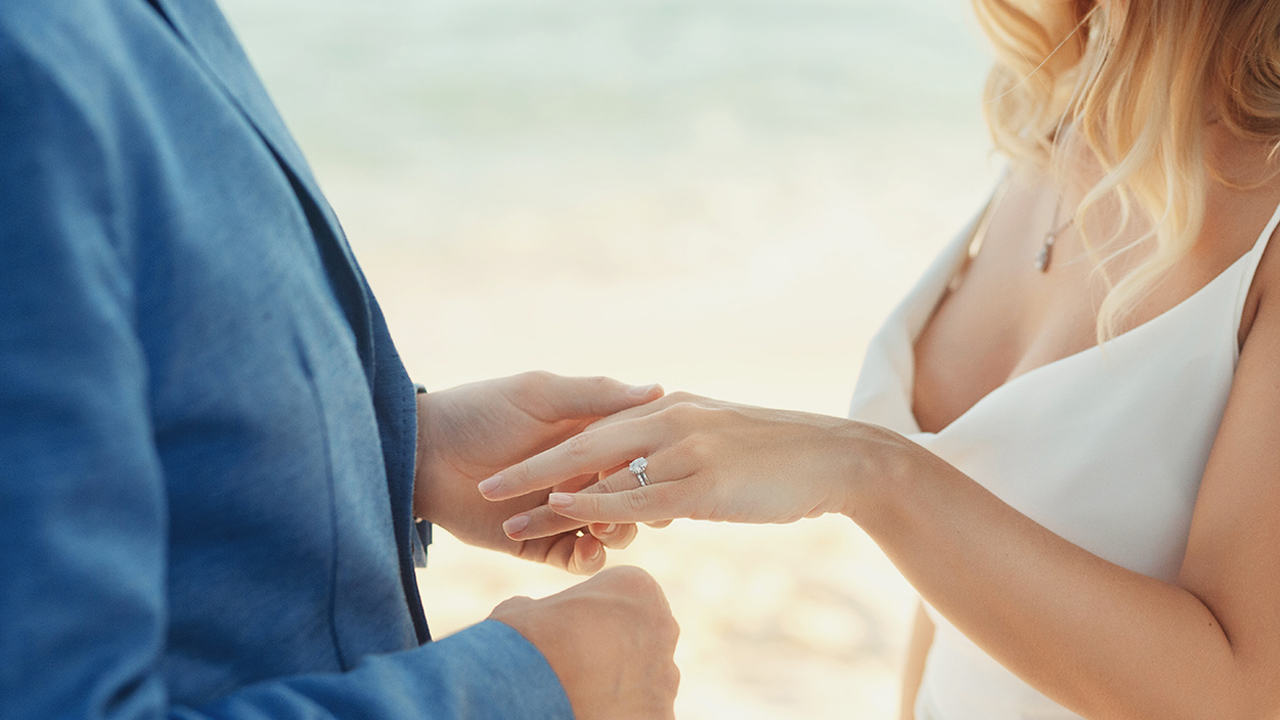The Complete Guide to Christian Weddings
by Hafsa Killru
So, you finally popped the
question to your Lady Love or you shouted a YES!
when he went down on his knees with a ring. What next? Now starts the planning
process for your Big Day already. However, you are not quite familiar with
every little detail of the ceremony that is ought to happen under the
followings of Christianity or you are just as interested to gain a deeper
insight into how these ceremonies take place in variance to your faith.
The diversity in cultures and religious
convictions sure does make us unsure of certain rituals and traditions that
hold a greater significance on the union of two souls. How will you know what
to exactly expect apart from walking down the aisle and exchanging vows?
Here’s a complete guide to all
you need to know about Christian Weddings. Let the hymns begin!
Pre-Wedding Musts
They say a wedding is one-day,
but a marriage is for a lifetime. And this is exactly why churches offer
marriage preparation. The belief is that how much ever a couple has in common,
both are individuals with distinct personalities, backgrounds, hopes and fears.
To bridge the gap between the differing mindsets and how they could overcome
possible obstacles throughout the course of their married life, the churches
offer educational sessions for the couples in regard to marriage. These
sessions may encompass broader topics such as communication, finance, sex, managing
family & other conflicts as well as children.
Then comes the confirmation of
vows - While you can always go along with the preset vows your Officiant
provides you with, you can also make your own vows to exchange the sacred
promises with your partner.
On a further note, the marriage
will also be announced on three consecutive Sunday masses before the Wedding
week and it is an open call for anyone to inform the Parish Priest if they
disapprove of the marriage set to happen.
The Ceremony
The Seating
The ceremony
commences with the seating of the family members of the to-be-married couple. The
Bride’s family is usually seated on the left side while the Groom’s family take
their seat on the right. However, guests may sit wherever they choose. The 1st 2 pews on either side are
reserved for the bridal retinue & immediate family members. This
may also include the members who have played an important role in their lives.
The Procession
The processional is the most awaited part of the Wedding and this is complemented
by any musical preludes or solos that should commence at least 5 minutes prior.
Initiated by the entry of the Groom with the Best Man, this is then followed by
the rest of the retinue where the Bridesmaids enter with the Groomsmen followed
by the Maid of Honour escorted by the Best Man (in case he does not enter with
the Groom). And at last, the little Flower Girl and Ring Bearer enter.
The Wedding March – A Walk to
Remember
Eventually, while
the Groom awaits at the altar, the Bride, hand-in-hand, with her father, steps
foot to walk down the aisle. It is important to note that the Bride comes
holding the right hand of whoever gives her away. This way it is easier
for the Groom to take the place of that man when the Bride comes up to the
altar. The Bride’s mother stands up as a notion to all the guests to
stand.
The Pledge to be Together
Forever
When everyone is settled at their
respective places, the Officiant makes the opening remarks: “Dearly Beloved, we
are gathered here today…” or any other words that deem welcoming and expresses
the importance of love and marriage. After the invitation to worship God, the
ceremony then transitions to The Opening Prayer which includes thanksgiving and
a call for spirituality and blessing.
Following this, the congregation
is requested to be seated and the giving away of the bride takes place and a
sample of this may exemplified by “Who gives this woman to be married to this man?”
which may be answered by the Bride’s parents saying “We do” in unison.
The Officiant then addresses the
couple and briefs them on the meaning of the vows to be exchanged and may also
highlight the duties and roles in marriage. Subsequently, the wedding vows are
then exchanged and as mentioned earlier, the couple may repeat the traditional
and familiar vows or recite the ones created by themselves. With this, the
couple then exchange their wedding bands and the Officiant pronounces the
Wedding official by saying, “I now pronounce you husband and wife.” And at
last, the moment everyone had been waiting for arrives – the first kiss as a
married couple.
The Officiant concludes the
ceremony with closing remarks with a few words to bless the couple a happy married
life. The last step of the ceremony is the Recessional – the reverse of the
processional where the newlyweds exit the venue together. The Wedding March by Mendelssohn is
generally played at the Recessional when the new couple come down the aisle to
exit the church as Husband & Wife.
Other Traditions & Rituals
Unity Candles
Some couples adopt specific
traditions to add more meaning to their Big Day and this includes the lighting
of Unity Candles. Not necessarily being a part of Christian Weddings, the couple
together use these two candles to light a third, larger candle and this not
only symbolises their unity as they start their new journey of life together,
but also represents the joining of two families with a love that burns as
bright as the flame.
White Wedding Dress
Traditionally, we have spotted
Brides adorned in an elegant white dress. But what does this signify exactly?
Well here it is! - It is most often depicted to be the wife’s purity in heart
and life and also considered to be an image of righteousness.
Today many Christians
have deviated from the practice of getting married at their place of worship
and more often choose to get married in much different surroundings. This
affects the sanctity of the Ceremony.
Post Ceremony Rituals
The Christian Weddings usually
have a Reception at the end of their ceremony. Their celebration part is often a
grand affair where the couple is often welcomed with a lot of confetti or
sprays. The couple then cuts their Wedding Cake and feed each other while the
party also includes offering toasts to honour the newly-married. The
celebrations come to an end with a feast and dance.
Related Articles
-
 Busting the Age Old Myths about the Poruwa Ceremony
Busting the Age Old Myths about the Poruwa Ceremony -
 Renaissance of Wedding Artistry - Hamna’s Sensational Wedding Creations…
Renaissance of Wedding Artistry - Hamna’s Sensational Wedding Creations… -
 Sundara by Mosvold - Luxuriate in Seclusion on Your Honeymoon
Sundara by Mosvold - Luxuriate in Seclusion on Your Honeymoon -
 Will you Honour & Obey? - The rules of marriage in a modern world…
Will you Honour & Obey? - The rules of marriage in a modern world… -
 Curating to perfection - Wedding Planners to the rescue
Curating to perfection - Wedding Planners to the rescue -
 FEATURE – Dhanushka Kuma
FEATURE – Dhanushka Kuma -
 Skin-tillating Wax for your Happily-Ever-After
Skin-tillating Wax for your Happily-Ever-After -
 Younger Looking Skin – Look like You’re 20 on Your Wedding Day
Younger Looking Skin – Look like You’re 20 on Your Wedding Day -
 The Picture Perfect Ice Breakers – Locations that are ideal for creating the memorable Pre wedding photo -shoots
The Picture Perfect Ice Breakers – Locations that are ideal for creating the memorable Pre wedding photo -shoots